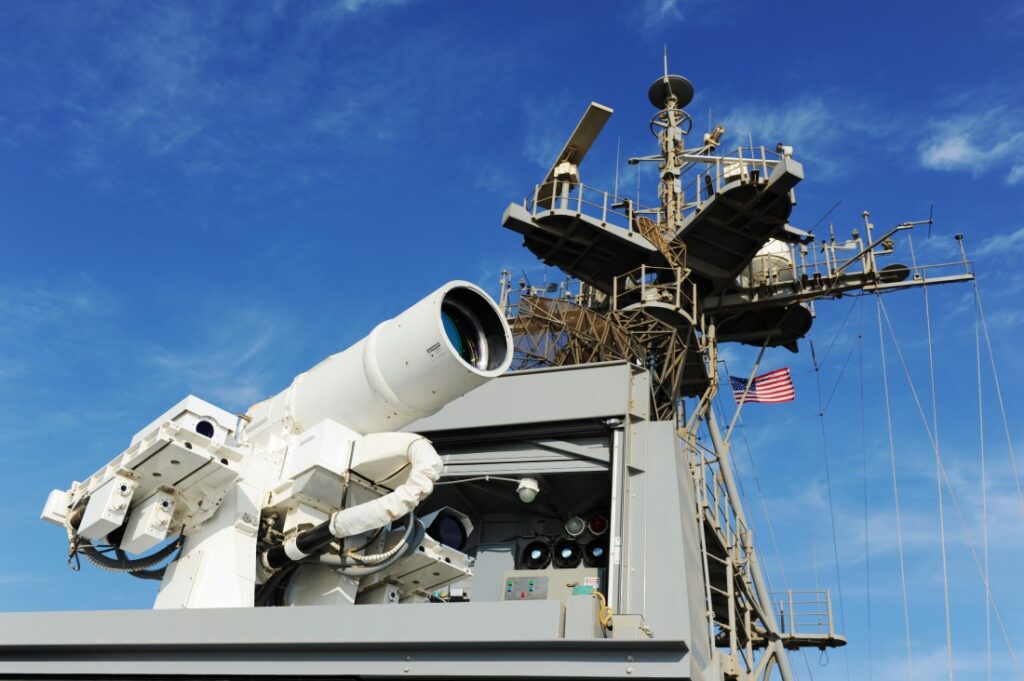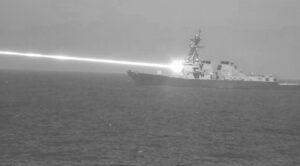Technology
Helios Laser Weapon Range: US Navy’s Breakthrough in Modern Warfare
The rapid advancement of military technology has ushered in a new era of warfare, with directed-energy weapons taking center stage. Among these groundbreaking developments is the Helios laser weapon range, a cutting-edge system developed by the US Navy. This high-energy laser system has demonstrated remarkable capabilities, successfully destroying drones and enhancing naval sensor operations.
With increasing threats from aerial drones, unmanned vehicles, and missile attacks, traditional defense systems must evolve to meet modern challenges. The Helios laser weapon range provides a cost-effective, efficient, and precise alternative to conventional missile-based defense. In a successful test, the US Navy hit a drone with the Helios laser, showcasing the system’s power, accuracy, and potential for future combat operations.
What is the Helios Laser Weapon System?
The High Energy Laser with Integrated Optical-dazzler and Surveillance (HELIOS) is an advanced, ship-based laser weapon developed by Lockheed Martin in collaboration with the US Navy. Designed as part of a broader push toward laser-based defensive and offensive capabilities, HELIOS integrates several cutting-edge technologies to neutralize threats effectively.
The system leverages high-energy laser beams to disable or destroy enemy drones, small boats, and potentially even incoming missiles. Unlike conventional weapons, which rely on kinetic energy and ammunition, HELIOS uses directed-energy to engage targets at the speed of light. This capability makes it a revolutionary tool for modern naval defense, reducing logistical constraints and operational costs.
The US Navy’s HELIOS laser weapon has a maximum range of five miles (8 kilometers). However, environmental factors and atmospheric interference can affect the range.
US Navy’s Successful HELIOS Test: A Game-Changer
In a groundbreaking test, the US Navy successfully hit and destroyed a drone using the HELIOS laser weapon. This demonstration confirmed the system’s operational effectiveness and ability to neutralize airborne threats in real time. The test involved tracking and targeting an unmanned aerial system (UAS) before firing a high-intensity laser beam that rapidly disabled the drone, proving HELIOS’s combat potential.
The test was conducted aboard an Arleigh Burke-class guided-missile destroyer, a platform equipped with state-of-the-art naval defense technology. The integration of HELIOS into such vessels enhances the Navy’s ability to counter asymmetric threats, providing a more adaptable and efficient means of protecting US assets at sea.
Key Features of the Helios Laser Weapon Range
1. High-Energy Laser Engagement
HELIOS uses a 60-kilowatt-class solid-state laser, capable of engaging a variety of targets with exceptional precision. Unlike traditional missile defense systems, which require extensive logistics and ammunition storage, HELIOS provides a virtually unlimited number of shots as long as power is available on the vessel.
HELIOS is designed to be integrated and expandable, potentially reaching 120kW to 150kW.
2. Integrated Optical-Dazzler for Sensor Disruption
Beyond its offensive capabilities, HELIOS includes an optical-dazzler designed to neutralize enemy surveillance systems. By blinding or disabling optical sensors on hostile drones or vessels, the system significantly reduces adversaries’ ability to gather intelligence, providing a tactical advantage to US forces.
3. Seamless Integration with Naval Combat Systems
HELIOS is fully integrated with the Aegis Combat System, the US Navy’s premier naval defense platform. This integration enables HELIOS to work alongside other ship-based weapons and sensors, creating a layered defense network capable of countering multiple threats simultaneously.
4. Cost-Effective and Sustainable Operation
One of the standout benefits of HELIOS is its affordability compared to traditional missile-based defense systems. Each engagement with HELIOS costs significantly less than firing a missile, making it an economically viable solution for sustained operations. Additionally, since it does not rely on physical ammunition, the system reduces supply chain constraints and logistical challenges.
How HELIOS Compares to Other Laser Weapons
The development of directed-energy weapons has gained traction across multiple military branches, but HELIOS stands out due to its maritime focus and seamless integration with existing naval defense frameworks. Compared to other high-energy laser systems like the AN/SEQ-3 Laser Weapon System (LaWS) and Rheinmetall’s High-Energy Laser (HEL), HELIOS offers superior operational versatility and power management.
Unlike LaWS, which has been tested aboard the USS Ponce with a focus on disabling small boats and drones, HELIOS introduces enhanced power output and sensor-disrupting capabilities. Meanwhile, Rheinmetall’s HEL is designed primarily for land-based applications, making HELIOS one of the most advanced naval-directed energy weapons in active development.
The Future of HELIOS and Laser-Based Naval Warfare
The success of HELIOS marks the beginning of a new phase in laser-based naval warfare. With continued advancements, future iterations of HELIOS may feature increased power output, expanded targeting capabilities, and even the ability to counter hypersonic threats.
Lockheed Martin and the US Navy are already exploring potential upgrades to extend the Helios laser weapon range and optimize its performance for long-range engagements. The potential to integrate AI-driven targeting, advanced cooling mechanisms, and improved energy storage solutions could make HELIOS a cornerstone of naval defense for decades to come.
Conclusion
The Helios laser weapon range represents a transformative shift in how the US Navy approaches modern warfare. By successfully demonstrating its ability to destroy drones and disrupt enemy sensors, HELIOS provides a powerful, cost-effective, and sustainable alternative to traditional missile-based defense systems.
As military threats continue to evolve, directed-energy weapons like HELIOS will play a crucial role in safeguarding US naval assets and maintaining a technological edge over adversaries. The recent successful test of the HELIOS laser system is a testament to the future of laser-based defense technology, ushering in a new era of precision warfare and advanced military capabilities.


